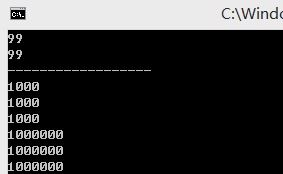#include<iostream>
#include<string>
//基类
class Pet
{
public:
Pet(std::string theName);
~Pet();
static int getCount();//作为一个接口
protected:
std::string name;
private:
static int count;
};
//子类
class Dog : Pet
{
public:
Dog( std::string theName );
};
//子类
class Cat : Pet
{
public:
Cat( std::string theName );
};
int Pet::count = 0; //分配内存,初始化为0
Pet::Pet(std::string theName)
{
name = theName;
count++;
std::cout<<"一只宠物出生了,名字叫做:"<<name<<"\n";
}
Pet::~Pet()
{
count--;
std::cout<<name<<"挂掉了\n";
}
int Pet::getCount()
{
return count;
}
Cat::Cat(std::string theName):Pet(theName)
{
}
Dog::Dog(std::string theName):Pet(theName)
{
}
int main()
{
Dog dog("Tom");
Cat cat("Jerry");
std::cout<<"已经诞生了"<<Pet::getCount()<<"只宠物\n\n";
{
Dog dog_2("Tom_2");
Cat cat_2("Jerry_2");
std::cout<<"已经诞生了"<<Pet::getCount()<<"只宠物\n\n";
}
std::cout<<"\n现在还剩"<<Pet::getCount()<<"宠物\n\n";
return 0;
}
静态方法的调用应使用:className::memethodName();
不要使用:objectName::methodName()会让代码变得很糟糕
静态成员是所有对象共享的,不能在静态方法里访问非静态的元素
非静态方法可以访问类的静态成员,也可以访问类的非静态成员
举个例子:
类A的声明与实现如下:
测试文件如下:
打印结果:
注意事项:
1.静态数据成员不能在类中初始化,实际上类定义只是在描述对象的蓝图,在其中指定初值是不允许的。也不能在类的构造函数中初始化该成员,因为静态数据成员为类的各个对象共享,否则每次创建一个类的对象则静态数据成员都要被重新初始化。静态成员的值对所有的对象是一样的。静态成员可以被初始化,但只能在类体外进行初始化(通常在实现文件中进行初始化)。
2.静态成员函数在类外实现时候无须加static关键字,否则是错误的。
3.静态成员仍然遵循public,private,protected访问准则。
4.静态成员函数没有this指针,它不能返回非静态成员,因为除了对象会调用它外,类本身也可以调用。静态成员函数可以直接访问该类的静态数据和函数成员,而访问非静态数据成员必须通过参数传递的方式得到一个对象名,然后通过对象名来访问。
5.静态成员之间可以相互访问,包括静态成员函数访问静态数据成员和访问静态成员函数;非静态成员函数可以任意地访问静态成员函数和静态数据成员;静态成员函数不能访问非静态成员函数和非静态数据成员;调用静态成员函数,可以用成员访问操作符(.)和(->)为一个类的对象或指向类对象的指针调用静态成员函数;静态成员变量只能被静态成员函数调用,静态成员函数也是由同一类中的所有对象共用,只能调用静态成员变量和静态成员函数。























 1万+
1万+

 被折叠的 条评论
为什么被折叠?
被折叠的 条评论
为什么被折叠?








